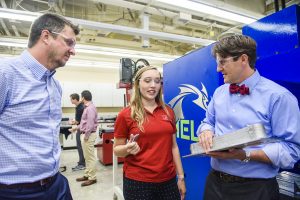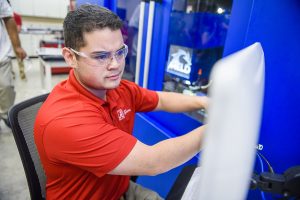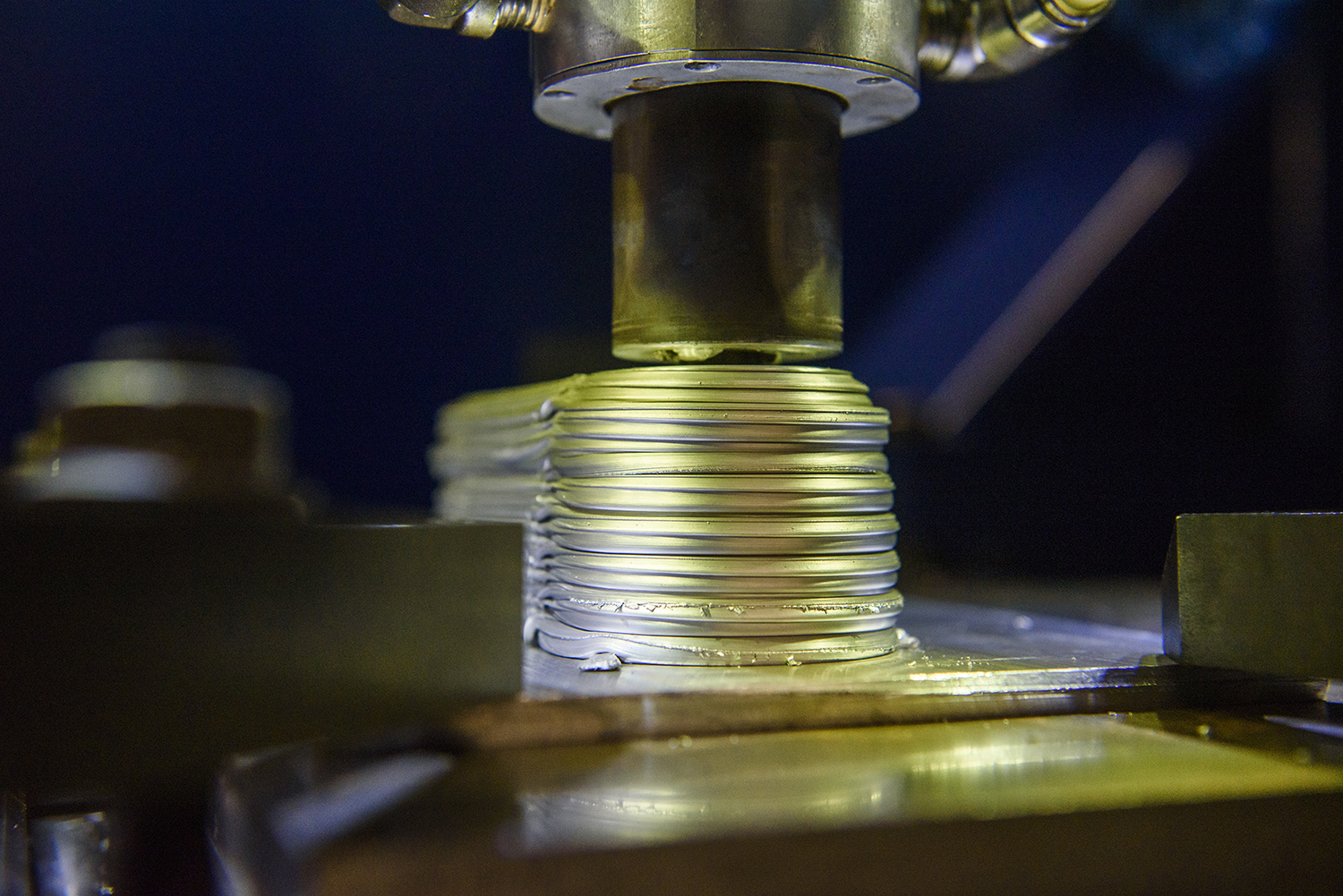UA Driving Military in Project to Recycle Scrap Metal into 3-D Printed Parts
When a metal part of a machine breaks at a military base in the field, replacing it comes through supply convoys or in the on-site machine shop. The former is risky, while the latter takes a lot of energy and time.
“There’s so much scrap metal, it’s an issue as to what do with the scrap left abroad,” said Dr. Brian Jordon, associate professor of mechanical engineering at The University of Alabama. “They either give it to the locals, or the government has to pay to get it out.”

But what if scrap metal from Forward Operating Bases, as they are called, could be recycled through 3-D printing, using the military’s own waste to repair equipment needed by soldiers? A project at UA attempts to show this is possible.
Sponsored by the U.S. Department of Defense’s Strategic Environmental Research and Development Program, UA researchers are examining how a new 3-D printing technology that prints metal parts easily and quickly using most any metal available could be used at Forward Operating Bases. Specifically, the research will use discarded metal chips from on-base machine shops along with damaged aluminum airfield matting used in establishing temporary runways.
“If we can use scrap material that we have in-theater, we can make the soldiers new components, repair battle-damaged equipment or use that battle-damaged material to fabricate new components with this technology,” said Dr. Paul Allison, UA assistant professor of mechanical engineering, who is leading the project.
Along with its expertise in the area, UA was selected for the project because the UA College of Engineering is the first university in the world to have an entirely new type of additive manufacturing machine produced by the MELD Manufacturing Corp., a spin-off of technology developed by Aeroprobe Corp.
The MELD B8 machine at UA uses a type of 3-D printing called Additive Friction Stir Deposition, which spins, or “stirs,” metallic powder or rod feedstock to heat and plastically deform it, without melting, depositing layers of the metal on top of each other. This SERDP project compresses scrap metal into rods that are fed into the machine and then heated and stirred for printing.
The process is similar to softening a stick of butter so it spreads easier. Spreading butter on bread kept in the refrigerator is nearly impossible. Leave the butter out on the counter a while, and spreading is smooth. The butter is not melted to a liquid, just soft.
With the MELD printer, the metal stays a solid, avoiding the issues with melting metal such as bubbling, shrinking and cracking.
“It’s very malleable because it is hot, but it’s not molten. That matters a lot,” said Dr. Luke Brewer, a UA associate professor of metallurgical and materials engineering, who is working on the project. “The line between melting and not melting is very significant.”

New parts can be printed right on top of an existing metal component because the MELD printer has smoothed the metal to bond.
“Instead of scrapping a whole casting, this allows you to machine away the defect and add the new material,” Allison said.
The printer does not have the spatial resolution of other methods of printing metal, but it is much faster and can use many different metals. Unlike other metal printing technology, the MELD printer does not use lasers and can print without grinding the metal into powder, two things difficult to carry out near battlefields.
The professors and students will characterize printed metal from the atomic- to the macro-level with powerful microscopes, test the metal’s mechanical properties and also create computer simulations of the printing process to improve it.
“We’re trying to get beyond ‘it works,’ to ‘how does it work?’” Brewer said. “There’s not really the fundamental data to allow us to predict performance.”
Jordon said the team needs to show how well the part printed in theater will work so the military can have the data to support further developing the technology. Ultimately, the project is designed to give the military confidence this technology can help soldiers in the battlefield.
“Instead of doing machining, we could build things through additive manufacturing at a Forward Operating Base,” Allison said. “If you can cut down on the number of items you have to ship out to the front, that’s a strategic advantage as well as an environmental advantage.”
